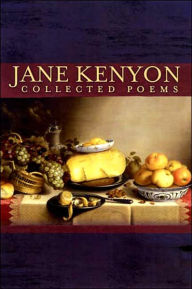In any communication there is a sender, a transference medium, and a recipient. When you whisper a secret to a friend, you are the speaker; the medium is the vibration in the air; and your friend is the recipient. For writers, our medium is our written work and our readers the recipients.
Each of these three components affects the content and quality of the communication. In the various discussion groups and critique sessions in which I’ve participated, I’ve been continually impressed by the different interpretations that readers may bring to the same poem or story based on their personal experiences and associations.
For me, reading Jane Kenyon’s poems for the first time has been like falling in love, that moment when you meet someone who seems to be your soulmate, who speaks your language, who knows what you have been through. I recently moved to a different part of the country after spending most of my life in one place. This early poem, about her move to New Hampshire, made me lose my heart to Kenyon’s work.
Here
You always belonged here.
You were theirs, certain as a rock.
I’m the one who worries
if I fit in with the furniture
and the landscape.But I “follow too much
the devices and desires of my own heart.”Already the curves in the road
are familiar to me, and the mountain
in all kinds of light,
treating all people the same.
And when I come over the hill,
I see the house, with its generous
and firm proportions, smoke
rising gaily from the chimney.I feel my life start up again
like a cutting when it grows
the first pale and tentative
root hair in a glass of water.
The initial uncertainty, the gradual familiarisation, the stunning final image: all of these are true to my experience. And as Adrienne Rich so beautifully said in her poem “Planetarium”, the poet “translate(s) pulsations / into images for the relief of the body / and the reconstruction of the mind.”
This book is like a time capsule, holding Kenyon’s intense communiqués. Some read like prayers, some like a succession of images, inviting us to bring our own interpretations. She writes of love and light and herons and wasps, of depression and death and the things that survive or don’t.
Although the language seems simple, it is carefully crafted. An allusion here, a descriptive detail there, internal rhymes and repetition all work to create the music of these works.
One poem that intrigued me is “Briefly It Enters, And Briefly Speaks”. It is a list poem, almost a series of haiku, each starting with “I am”. It begins:
I am the blossom pressed in a book,
found again after two hundred years. . . .I am the maker, the lover, and the keeper. . .
In trying to understand how this succession of images works as a coherent whole, I discovered subtle transitions: a starving girl to food on a plate to water filling a pitcher to a dry garden to a stone doorstep and inside a “heart contracted by joy. . . .”
I’m grateful to have found this treasure chest of poems that speak to me so clearly and illuminate my heart and give voice to my cares and celebrations. The speaker, the writer, may be gone but she has left us these gems to carry her voice to our ears.
Is there a poet or songwriter you’ve discovered recently whose work seems to speak to you?

barbara, thanks a lot for the article post.Much thanks again. Fantastic.
You’re welcome!